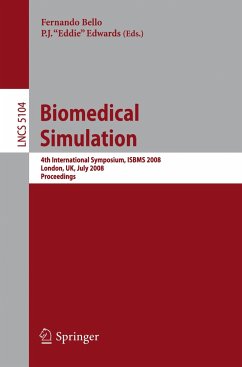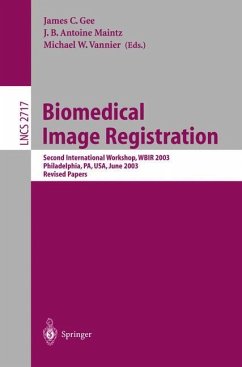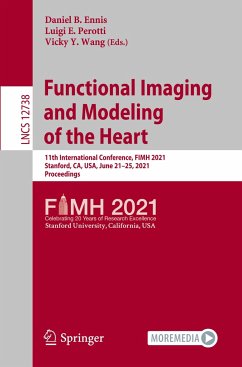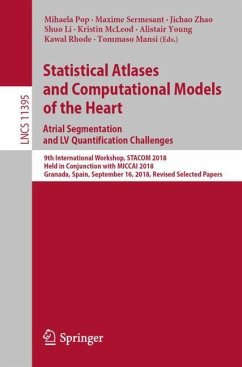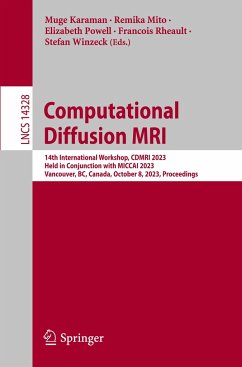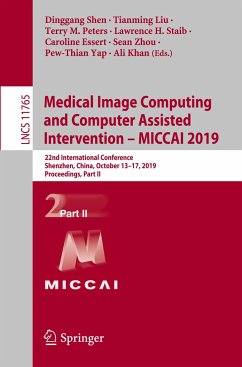
Functional Imaging and Modeling of the Heart
13th International Conference, FIMH 2025, Dallas, TX, USA, June 1-5, 2025, Proceedings, Part I
Herausgegeben: Chabiniok, Radomír; Zou, Qing; Hussain, Tarique; Nguyen, Hoang H.; Zaha, Vlad G.; Gusseva, Maria

PAYBACK Punkte
57 °P sammeln!
This two-volume set, LNCS 15672 and LNCS 15673, constitutes the refereed proceedings of the 13th International Conference on Functional Imaging and Modeling of the Heart, FIMH 2025, held in Dallas, Texas, USA, during June 2 4, 2025.The 79 full papers presented in this book were carefully reviewed and selected from 93 submissions. These papers have been organized in the following topical sections:-Part I: Models for Electrophysiology, Arrhythmia and Their Sequalae; Biomechanics and Assessment of Cardiovascular Health; Model-Enhanced Data Acquisition and Processing.Part II: Multiscale & Multimod...
This two-volume set, LNCS 15672 and LNCS 15673, constitutes the refereed proceedings of the 13th International Conference on Functional Imaging and Modeling of the Heart, FIMH 2025, held in Dallas, Texas, USA, during June 2 4, 2025.
The 79 full papers presented in this book were carefully reviewed and selected from 93 submissions. These papers have been organized in the following topical sections:-
Part I: Models for Electrophysiology, Arrhythmia and Their Sequalae; Biomechanics and Assessment of Cardiovascular Health; Model-Enhanced Data Acquisition and Processing.
Part II: Multiscale & Multimodality Imaging; Image Processing and Visualization; Clinical Translations of Computational Modeling across Medical Specialties.
The 79 full papers presented in this book were carefully reviewed and selected from 93 submissions. These papers have been organized in the following topical sections:-
Part I: Models for Electrophysiology, Arrhythmia and Their Sequalae; Biomechanics and Assessment of Cardiovascular Health; Model-Enhanced Data Acquisition and Processing.
Part II: Multiscale & Multimodality Imaging; Image Processing and Visualization; Clinical Translations of Computational Modeling across Medical Specialties.




